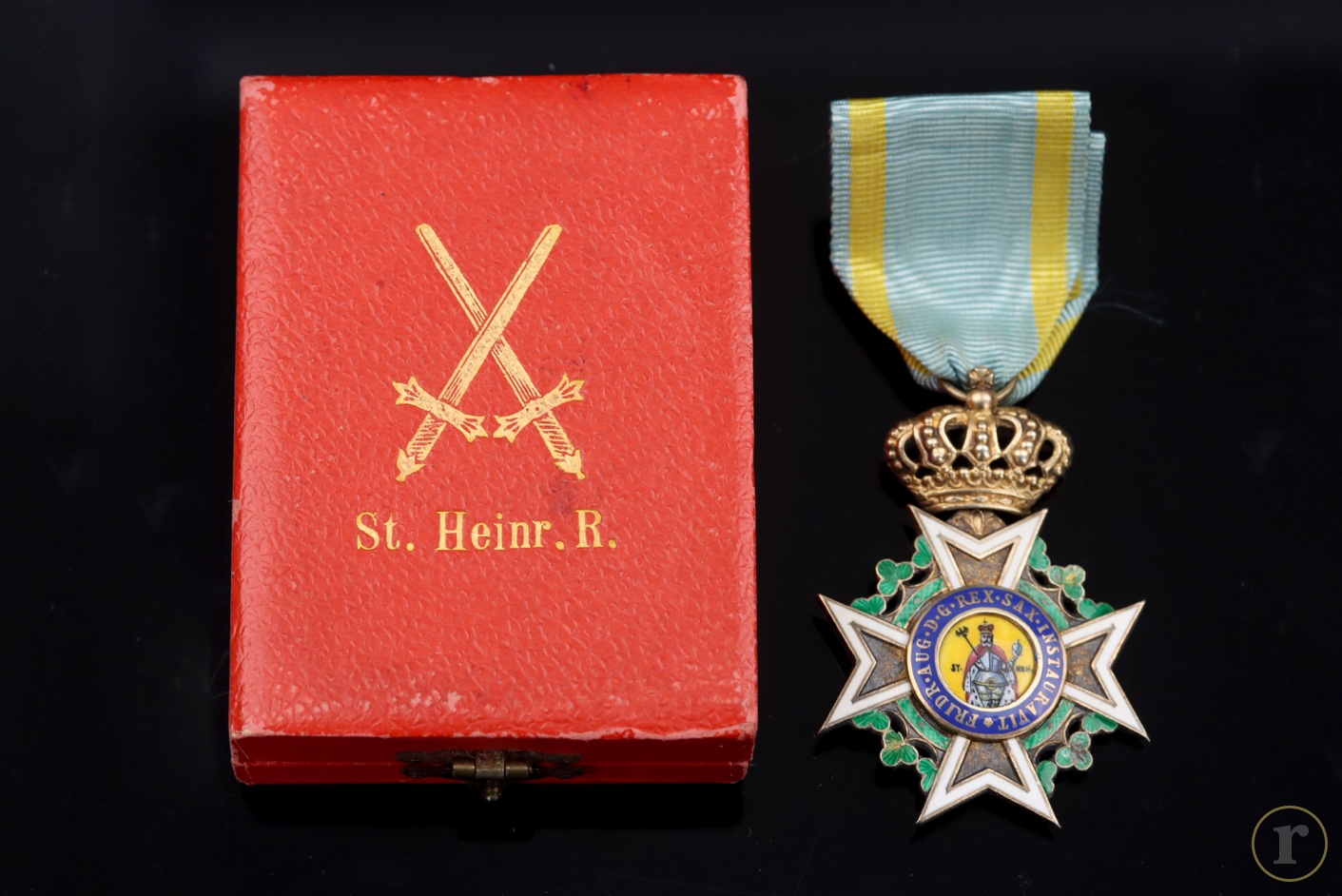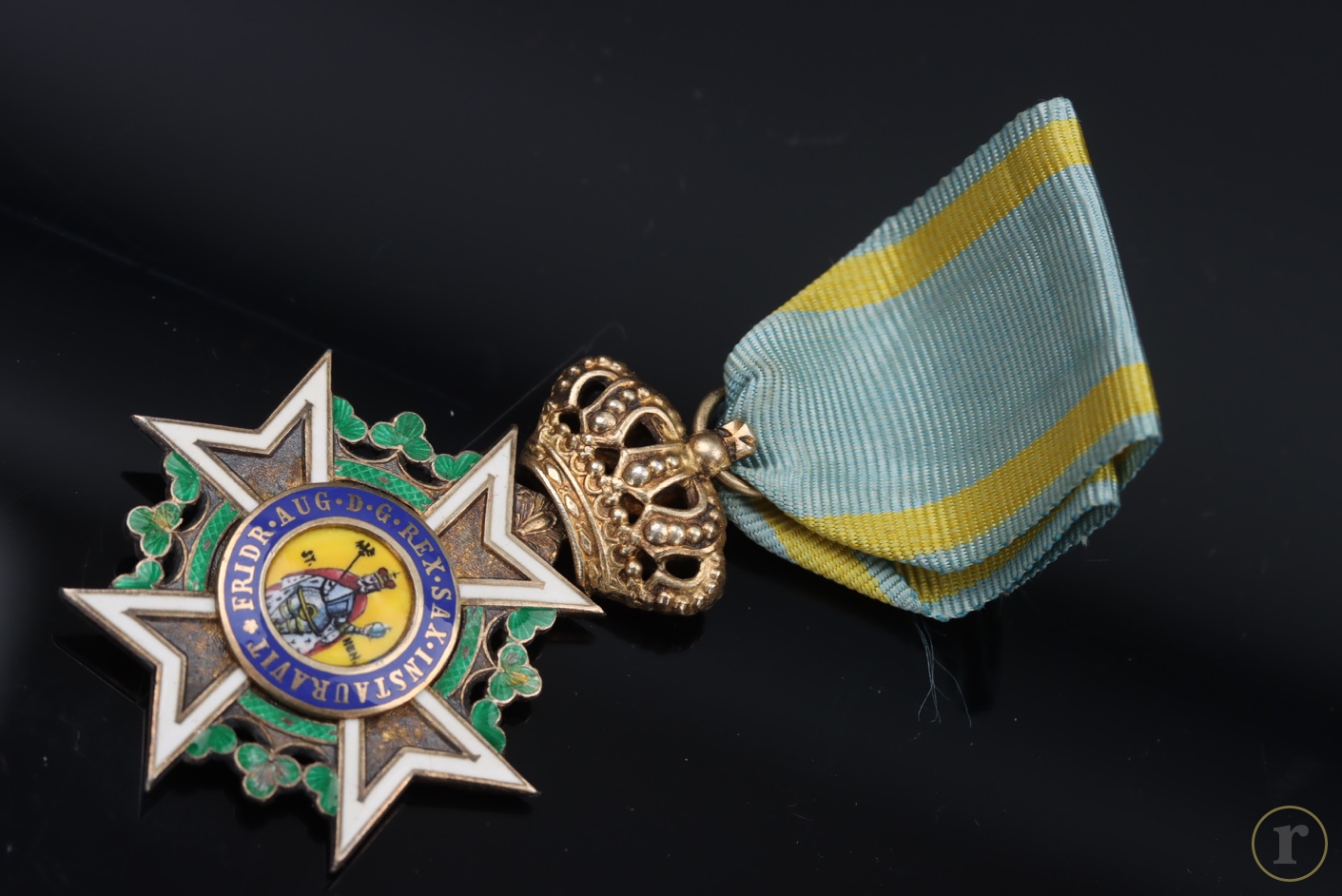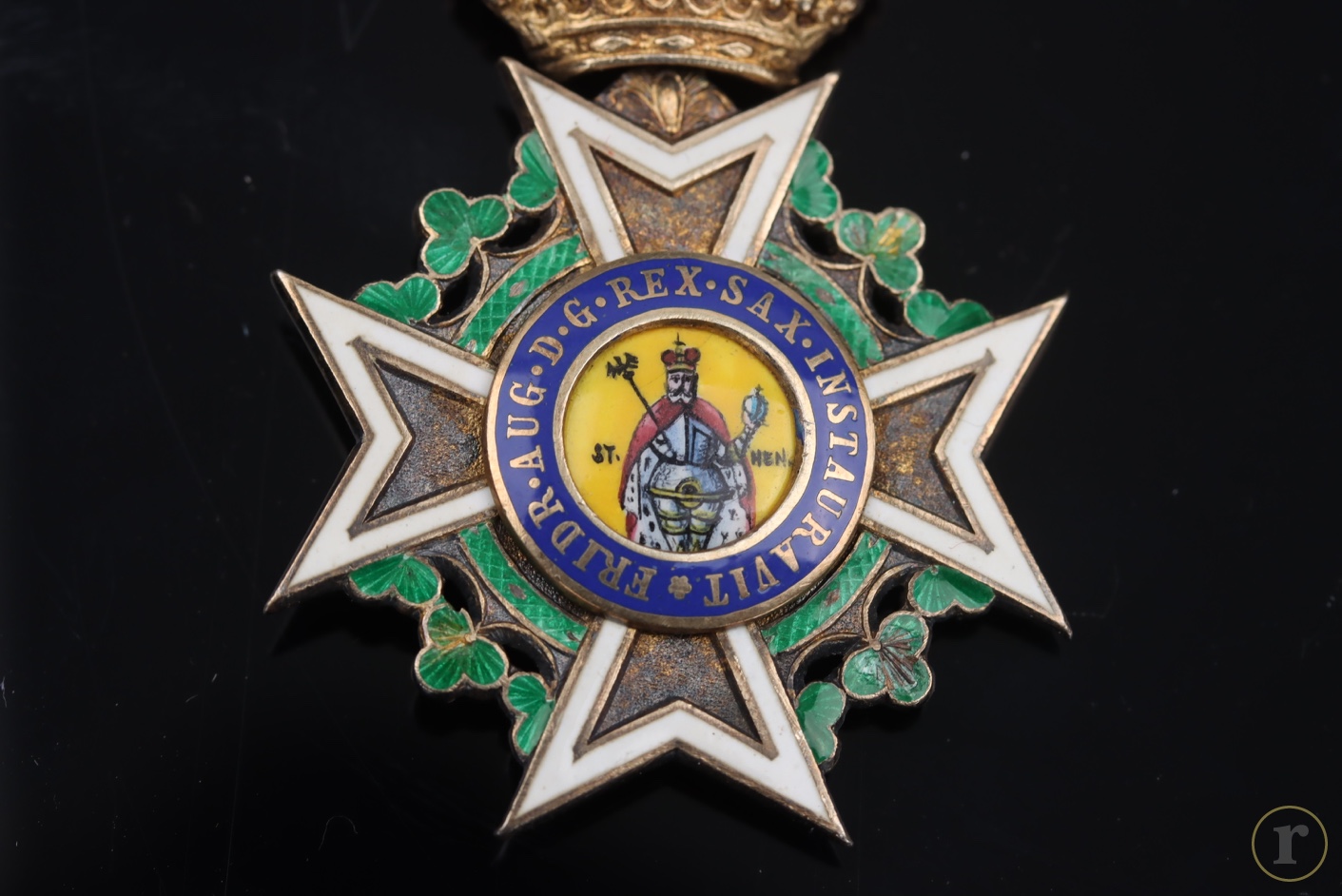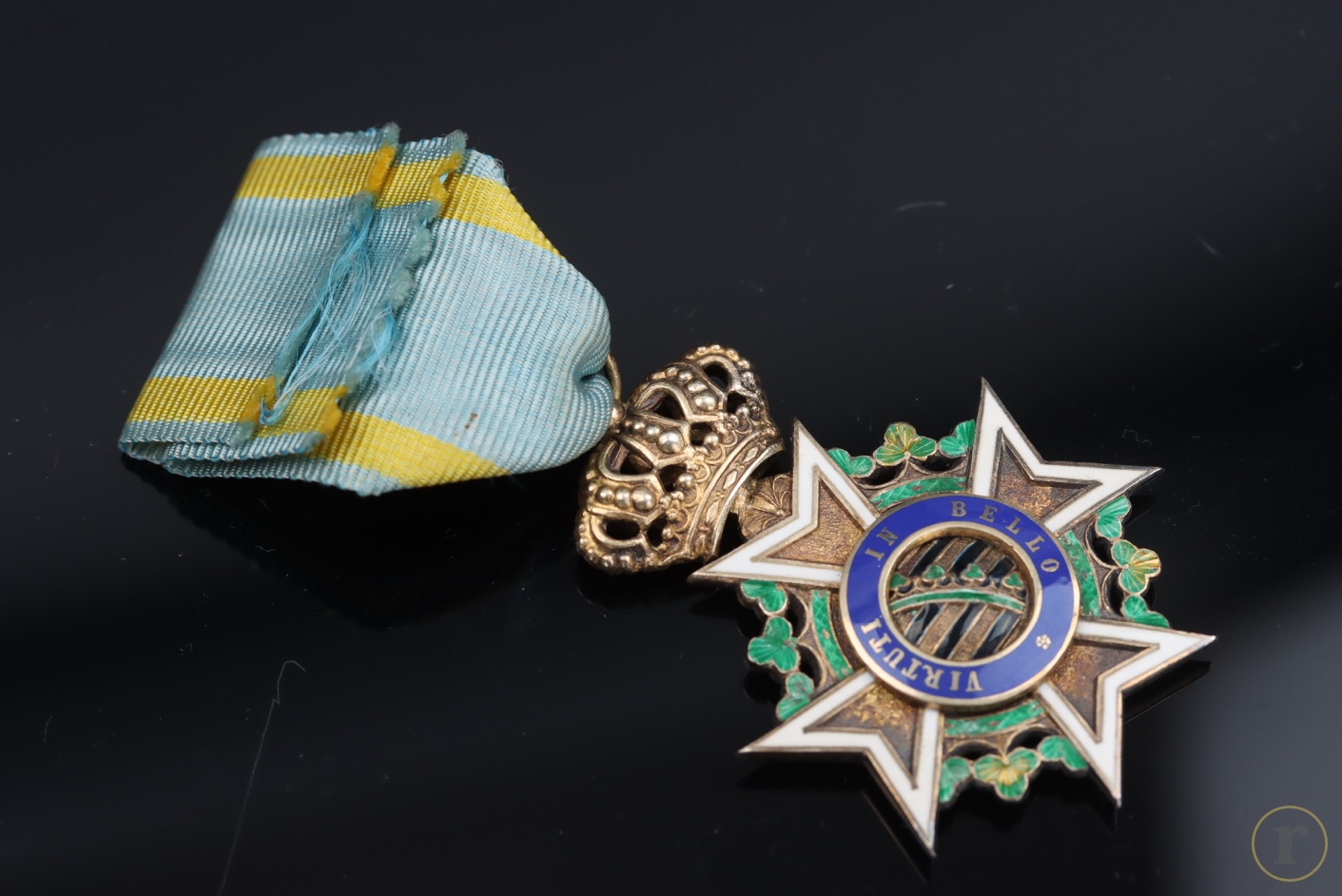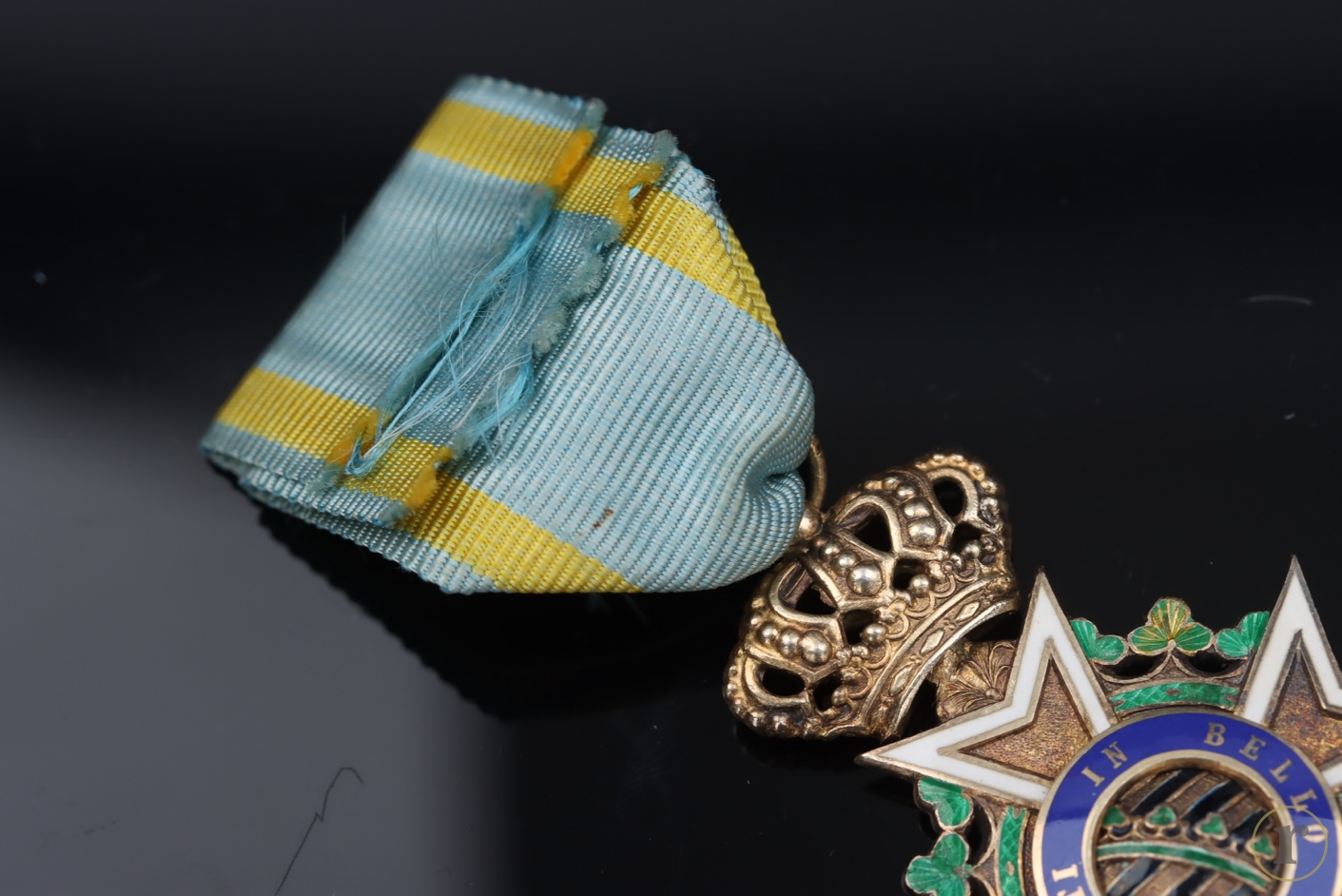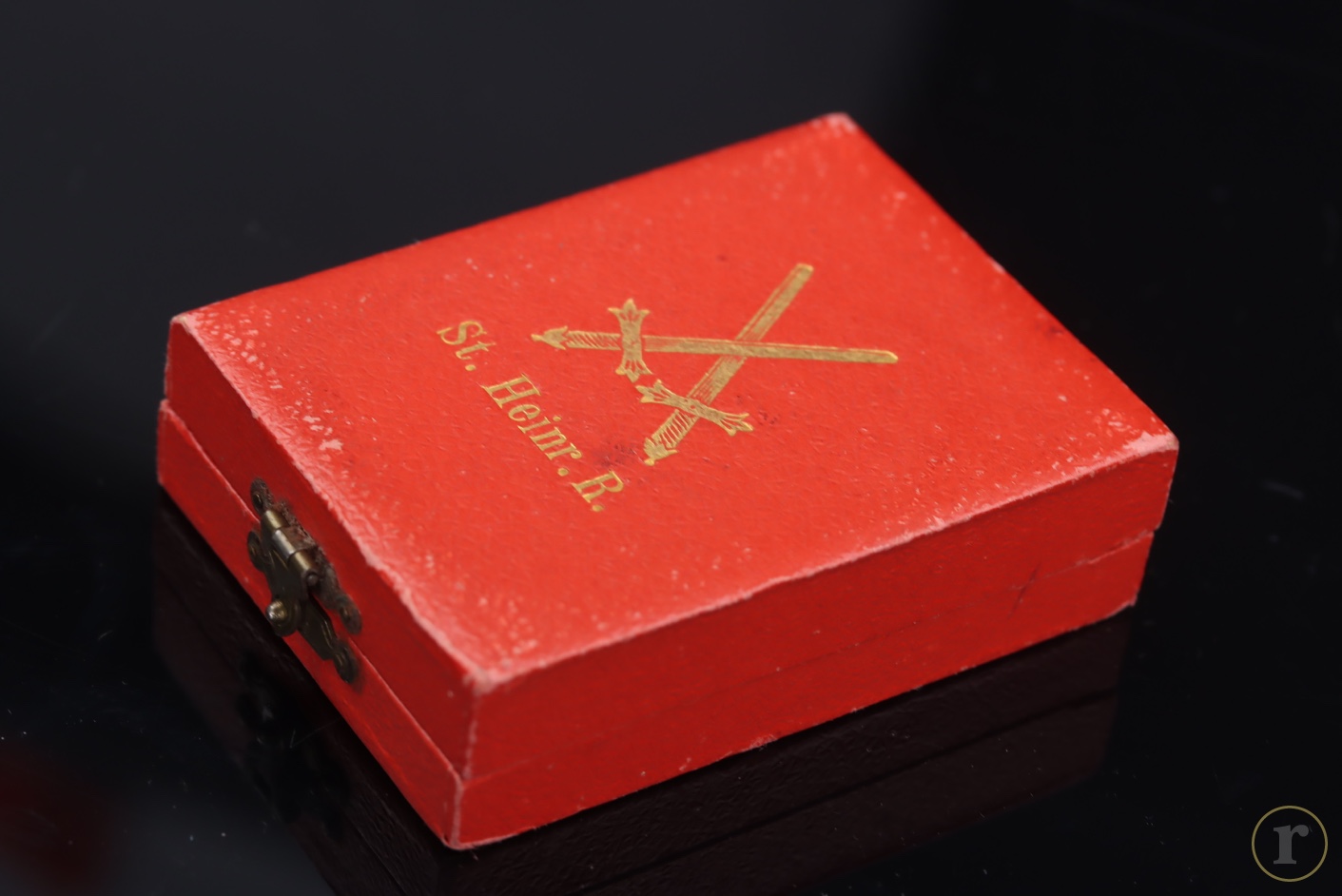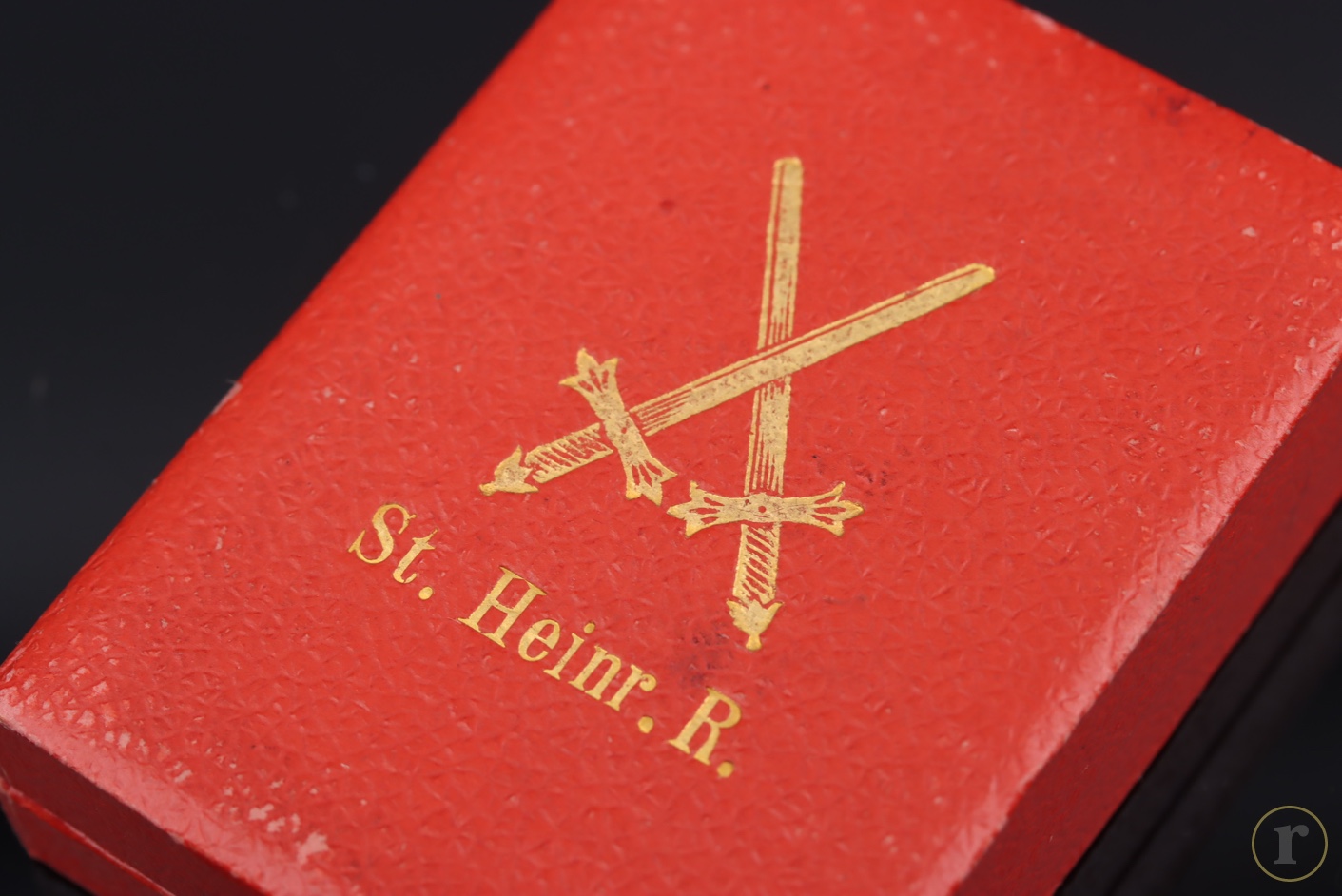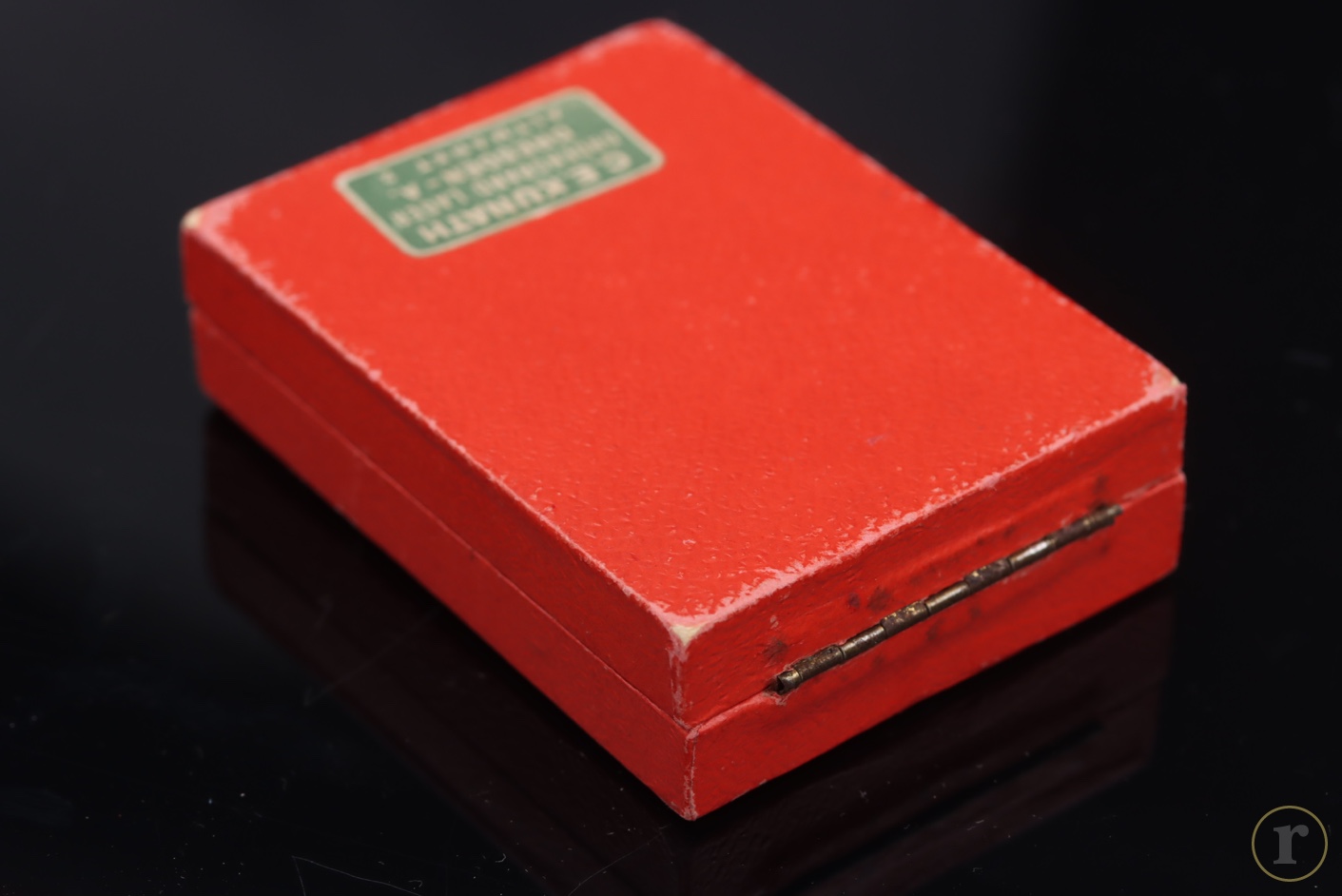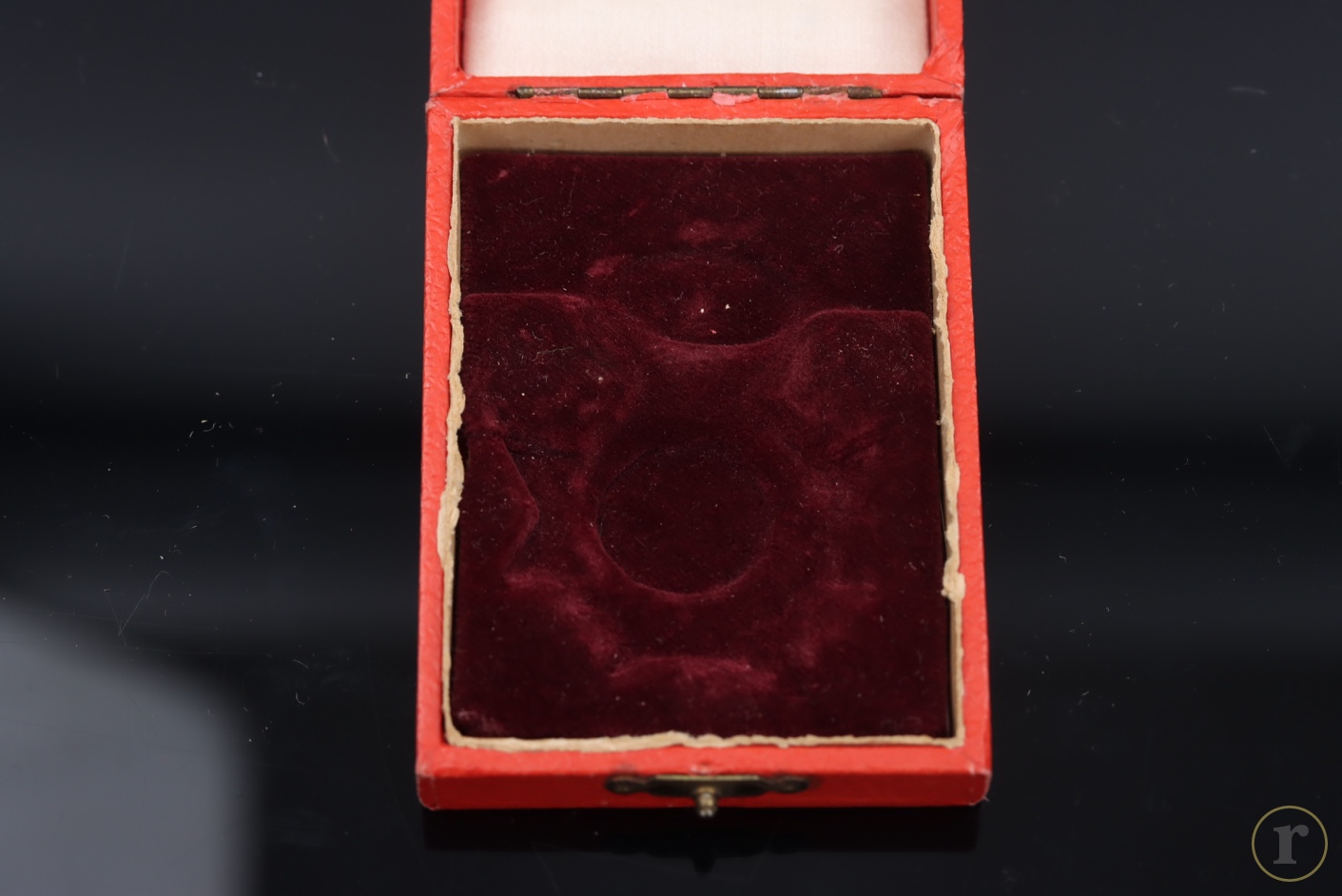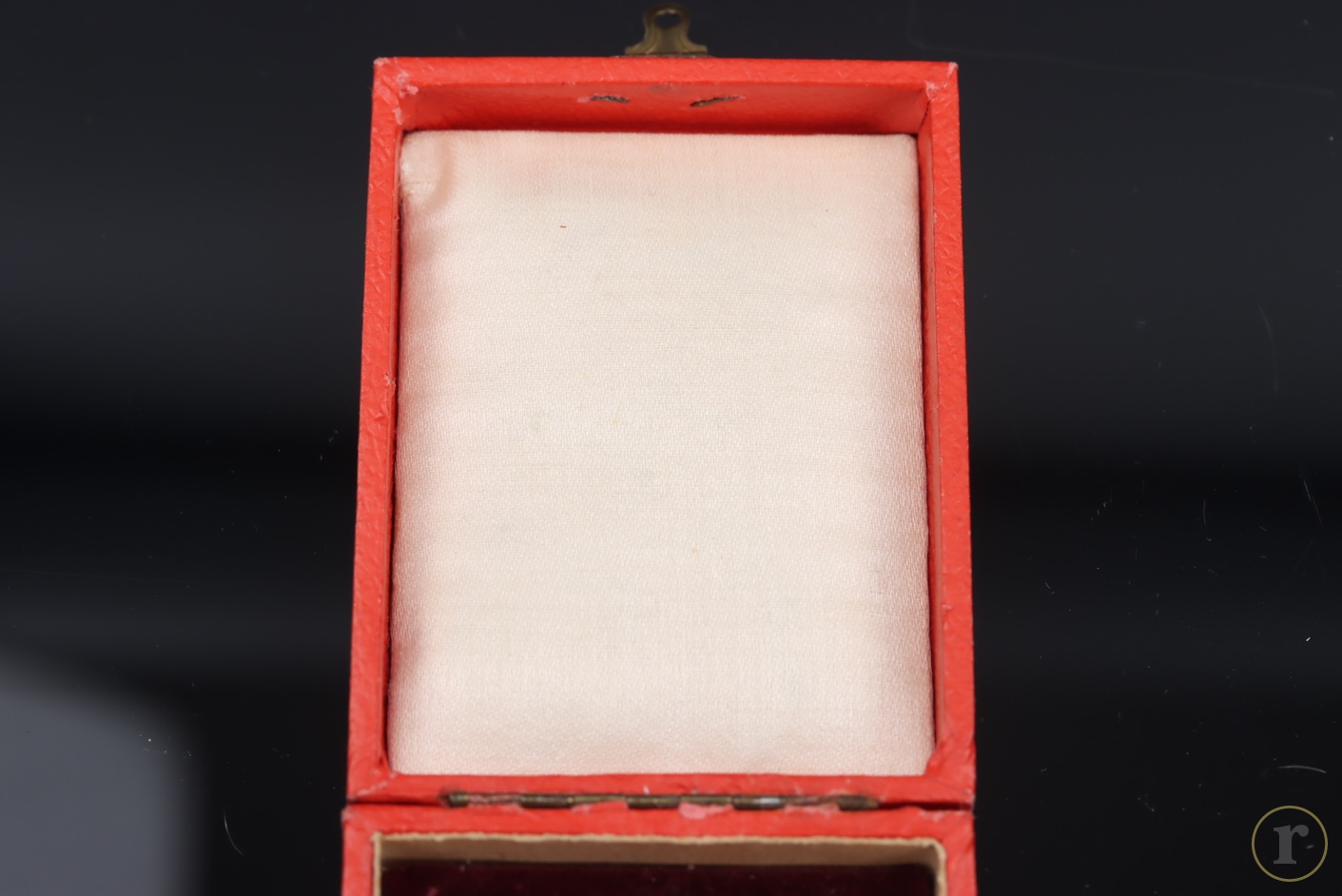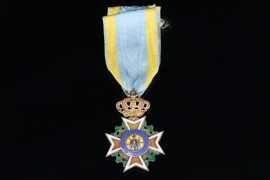NEW UPDATE - MAY 2022
Buy treasures for a reduced Buyer‘s Premium
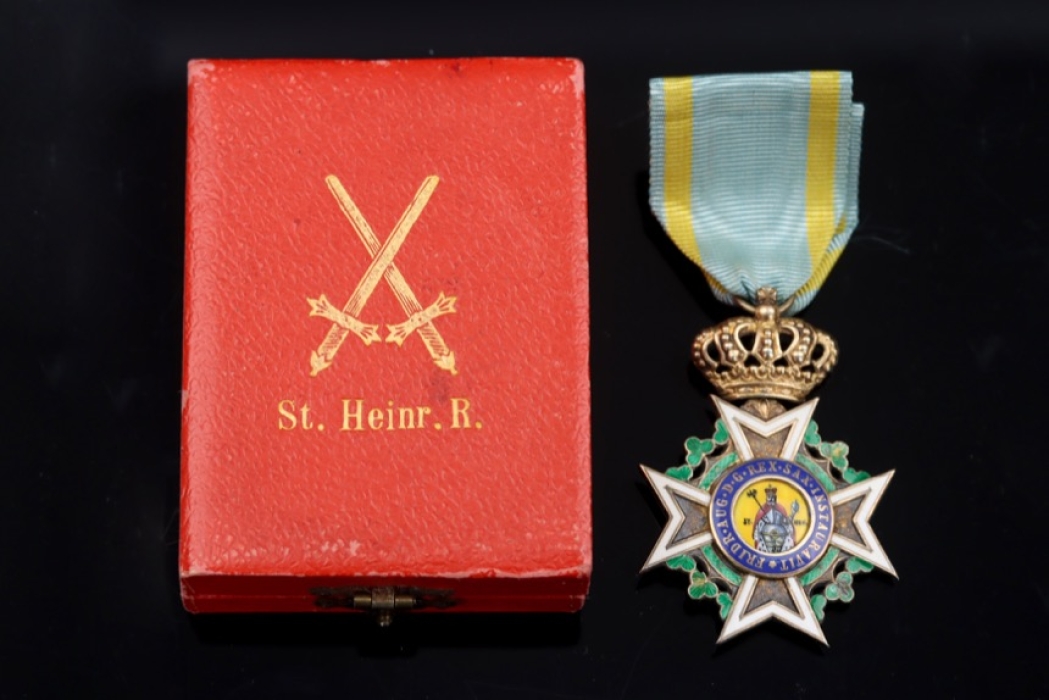
Saxony - Military St. Henry Order Knight's Cross
Own a similar product you want to sell? We are here for you at +49 8541 9053699
-
MEDALNET APPRAISAL SERVICES
-
MEDALNET APPRAISAL SERVICES
MEDALNETSERVICES.COMThis item was examined and validated in cooperation with MEDALNET APPRAISAL SERVICES. Our team’s knowledge base received the most competent boost for orders and decorations for imperial orders and decorations with the help of Bernd Kruse and Andreas M. Schulze Ising. Andreas and Bernd are held in high regard with collectors around the world. With more than 50 years of experience in the field of order decorations and medals, they are seen as competent and independent experts.
GUARANTEEAs usual, we offer a full right of return for originality within the withdrawal period for items that are offered in cooperation with MEDALNET APPRAISAL SERVICES.
MEDALNET APPRAISAL SERVICES
-
-
PAYMENT
-
HOW CAN I PAY FOR MY ORDER?
AUCTIONSYou will receive an e-mail confirming your successful bids the day after the auction has ended. In your personal my ratisbon's you will be able to inform us about your most convenient payment method for this order or tell us about an alternative shipping address.
If we don’t hear from you within 24 hours, we will send an invoice choosing the payment and shipping options which we think are the most comfortable ones to you. If you decide to change your shipping or payment method after receiving your invoice, just drop us a line or visit my ratisbon's/ORDERS for any more details.
SHOP ORDERSChoose your payment method when ordering and submit your order. Once your order has been received we will send an invoice including your shipping costs and your payment instructions.
After receiving the invoice, the order must be paid within 7 days.
Please contact us to discuss layaway options.To learn more about paying at ratisbon's, please see your FAQ pages.
WE ACCEPT FOLLOWING PAYMENT METHODS
-
-
Versand
-
HOW DO YOU SHIP MY NEW TREASURES?
PACKING & TRACKINGWe usually send out orders within 1-3 working days after your payment has been received. In most cases, we are faster than this! We will inform you when your goods are being dispatched and provide a tracking number, In addition, you can always check your order status at my ratisbon's/ORDERS. Delivery times will vary depending upon the delivery destination and type of shipping service you have chosen.
SHIPPING TO ALTERNATIVE ADDRESSIf you prefer to have your order shipped to your work address or a friend during your absence, we will happy to arrange this for you. Send us an email letting us know about your new shipping address and we will be happy to send an updated invoice to you.
OUR LOGISTIC PARTNERS ARE AS FOLLOWS
-
-
OUR GUARANTEE
-
 OUR GUARANTEE!
OUR GUARANTEE!We only offer collectables which to the best of our specialists knowledge are authentic. About 15% of all consignments are returned to the consignor after extensive research due to authenticity issues.
Unlike traditional auction houses we do offer a full right of return. If you are not satisfied with what you won or bought, you may return it within 14 days. Please inform us and we will instruct you on how to return the goods. For more information, please visit FAQ pages.
Important note: Cancelling bids after an auction may disappoint the consignor, who like you is a collector. This situation is easy to avoid. We encourage you not to bid on any collectable if you are unsure if it fits into your collection. Ask us to cancel your bid 24 hours prior to the end of an auction to avoid this situation.
-
COUNTRY Imperial Germany
DIMENSIONS 55,2 x 38,4 mm
MAKER
WEIGHT 23,3 g
EAN 2000000652276
PERIOD until 1918
COUNTRY Imperial Germany
MATERIAL silver
DIMENSIONS 55,2 x 38,4 mm
OEK 2088/1
MAKER
WEIGHT 23,3 g
COUNTRY Imperial Germany
LOT K-7966
DIMENSIONS 55,2 x 38,4 mm
EAN 2000000652276
OEK 2088/1
MAKER
WEIGHT 23,3 g
Saxony - Military St. Henry Order Knight's Cross
Description
Knight's Cross of the Saxon Military Order of St. Henry, gilded silver, without manufacturer's mark. Typical World War I decoration. Minor enamel chipping in the green enamel hardly effects the overall appearance of this cross. In the original red case of issue with imprint of golden swords and "St. Heinr. R.". The reverse has the sticker of the company Kunath in Dresden.
Very nice set.
Condition
1- 2
The St. Henry order stems from the prince-electoral times and goes back to 1736. Being granted the dignity of Kings on December 19, 1806, the order arrived at its last design stage, replacing the prince-electors hat with the kings’ crown. King Friedrich August I. resurrected the order informally by drawing back on the statues from 1768 without changing anything after his own taste. The order consisted of the Grand, the Commander and the Small Cross (later Knight Cross).
Initial awards were conducted during the celebration of the peace agreement in Tilsit in July 1807. Napoleon and his entourage resided in Dresden during the period of July 17 to 22 and received various orders including the St. Henry Order.
Friedrich August I. was survived by his brother King Anton, who adapted the statues December 23, 1829 and added a Commander 2nd Class to the Order. King Johann created a special Grand Cross decoration for King Wilhelm I. with laurel leaves. He received a Grand Cross set with star as well as a smaller decoration to be worn around the neck, a practice done with later awards. King Albert received from his Army a Grand Cross and Collar chain for his 50th anniversary in the military on October 24, 1893. A grand master cross was also created, which differentiated from the regular cross by its cross tips ending in balls.
On March 17, 1796, the Military Merit Medal in Gold was created. King Anton updated the regulation in 1829 and added a silver medal. The medal was from then on called: “Medal of the Kings Saxon Military St. Henry Order”. From 1870 on the gold medal could be awarded without a preceding silver medal. It was possible to wear both medals from 1935 on. By declaration in 1934 and 1936 all grades of the Military St. Henry order belonged to the highest war decorations and had to be addressed as such. The St. Henry Order was accepted into the round of bravery awards and was eligible to receive an honorary pension.
The collar chain consisted of alternating medallions, with a) showing a rounded Saxon coat of arms surmounted by a king’s crown supported by two lions and b) a round blue enameled medallion with the golden cypher AR affixed to the middle surrounded by a green laurel wreath. The Cross was attached to a suspension that consisted of two crossed golden marshal batons combined by a blue enameled bow showing the dates “1843-1893”.
The crosses, varied in size by class, are golden ones, framed by a white enameled border. In between those cross arms are green enameled crowns of rue segments. The avers medallion shows the saint on a yellow background in knights’ armor and prince-elector hat, within the inscription “S. Henr.” (also: “ S. Hen.) surrounded by a blue enameled ring featuring the inscription: “FRID. AUG. D. G. REX SAX. INSTAURAVIT”. The reverse medallion consists of the coat of arms surrounded by a blue enamel ring with the inscription: “Virtuti in Bello'' terminated on the 6 o’clock by a floral sign. The Commander and Grand Cross star are identical in design but different in size. The eight pointed golden star features in its center the saint identical to the design of the crosses and is surrounded by a blue ring with the inscription: “ VIRTUTI IN BELLO” over a green enameled laurel wreath.
